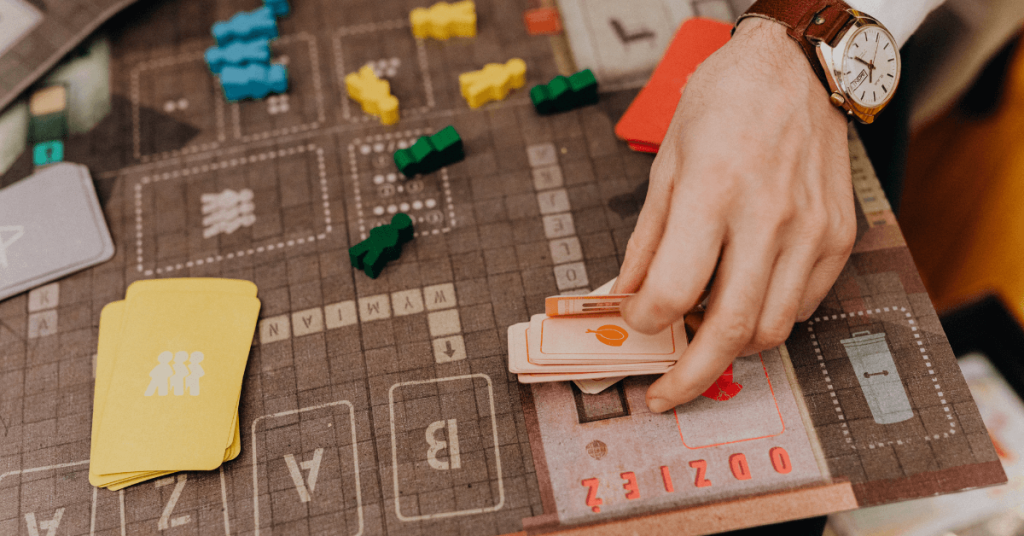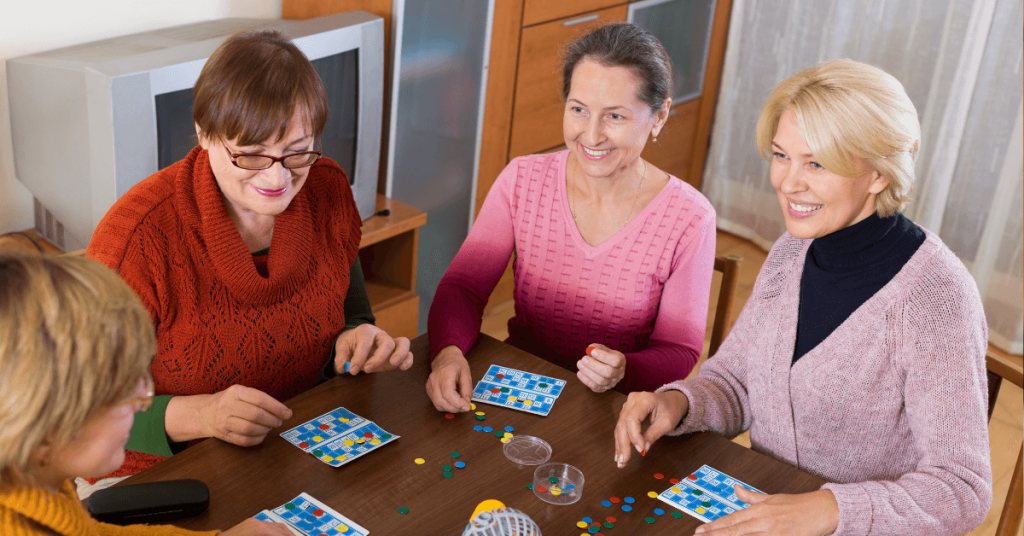In 2025, cooperative board games aren’t just a niche—they’ve become a movement reshaping how people play. Once dominated by winner-takes-all competition, the board game world has pivoted toward collaboration, problem-solving, and shared triumphs.
The appeal isn’t hard to understand. In a culture saturated with individual metrics—likes, followers, productivity trackers—cooperative games are a relief. They invite players to sit down, switch off the scoreboard, and work toward something together. The victory feels different when it’s not just yours, but everyone’s.
These games are also thriving because of how we live now. Families scattered across time zones use them as intentional connection time. Friends use them as low-stakes hangouts in place of endless scrolling. Even offices are swapping trust falls for Pandemic Legacy or The Crew to build real teamwork. Cooperative games scratch the itch for both play and presence—and in an era of digital isolation, that combination is powerful.

Top 10 Cooperative Board Games You Need to Play Today
Co-op games have exploded in variety and depth. Some are simple, 20-minute plays; others are sprawling campaigns that last months. Here are 10 worth your table time:
- Pandemic – A modern classic. Work together to stop global outbreaks before it’s too late.
- Forbidden Island – Accessible, fast, and tense: escape before the island sinks.
- Gloomhaven – A massive, evolving tactical fantasy campaign with unforgettable storytelling.
- Arkham Horror: The Card Game – Team up to solve cosmic mysteries in Lovecraft’s universe.
- Spirit Island – Play as elemental spirits defending your land against colonizers.
- Castle Panic – Lighthearted defense against waves of monsters; great for beginners.
- The Crew: The Quest for Planet Nine – A cooperative twist on trick-taking that demands communication.
- Robinson Crusoe: Adventures on the Cursed Island – Resource management and survival at its hardest.
- Mysterium – Solve a murder using abstract visions from a ghostly teammate.
- Harry Potter: Hogwarts Battle – Battle dark forces as a team of Hogwarts students.
Each brings something different—narrative, strategy, tension, or mystery—but all require players to talk, plan, and succeed together.

How Cooperative Board Games Strengthen Social Bonds
Unlike competitive games, where there’s one winner and several losers, co-op games level the room. Everyone’s invested in the same outcome, which makes them uniquely suited for strengthening relationships.
These games naturally encourage meaningful conversation. They reveal how people handle stress, delegate, or think strategically. You notice who thrives in crunch-time planning and who keeps morale steady when the game looks lost.
Think of Pandemic again: one person might shine at logistics, another at quick problem-solving. Each role matters, and the group can’t win without them. That dynamic often carries outside the game—reminding friends, families, or coworkers of each other’s strengths in real life.

How to Get Started with Cooperative Board Games: A Beginner’s Guide
If you’re new to co-op board games, the good news is you don’t need a huge library to begin. A few tips:
- Pick a starter-friendly game – Forbidden Island or Castle Panic are ideal entry points.
- Learn together – Instead of one person teaching, read rules aloud or watch a quick tutorial video.
- Choose the right group – These games work best with people open to collaboration, not hyper-competitors.
- Don’t fear losing – Some games are designed to be tough. The fun is in trying again with a new plan.
Once you’ve played a few, you’ll quickly see which style of game—story-heavy campaigns, puzzle-solving, or fast party co-ops—fits your group’s energy.

Cooperative Board Games for Kids: Learning Through Play
For kids, cooperative games double as life lessons in disguise. Instead of fighting to be “the winner,” children learn how to share responsibility and solve problems together. A few standouts:
- Outfoxed! – A kid-friendly deduction game where teamwork cracks the case.
- Castle Panic – Simplified for younger players but still full of teamwork.
- Rush Hour (co-op version) – Puzzles that encourage joint problem-solving.
- Zombie Kidz Evolution – A legacy-style campaign that evolves with each play.
- Mole Rats in Space – Quirky and cooperative, with a fun space adventure vibe.
These games help kids practice collaboration, patience, and empathy—all while having fun. They rarely realize they’re learning because the focus is always on the shared mission.

Best Cooperative Board Games for Adults: Fun for the Whole Family
Adults often want deeper strategy, richer storytelling, and more challenge—and cooperative games deliver. A few favorites:
- Pandemic Legacy – A campaign version of Pandemic where the board itself evolves over time.
- Gloomhaven – Complex, immersive, and endlessly rewarding.
- The Crew – Compact, clever, and perfect for short game nights.
- Dead of Winter – Survive a zombie apocalypse with both team and hidden personal goals.
- Unlock! – Escape-room puzzles in a box.
These games often stretch longer, demand sharper tactics, and spark intense discussion. For many adults, that’s the point—the fun is in being tested as a group.

Cooperative vs Competitive: Why Working Together Is More Fun
Competitive games test individuals; cooperative ones test the group. Both can be satisfying, but the energy feels completely different.
In competition, tension builds between players. Someone wins, but the rest lose. With co-ops, tension builds against the game itself, not against each other. Victory feels shared. Defeat feels collective. No one leaves the table frustrated at a friend.
And in 2025, when so much of life already feels competitive—workplaces, online platforms, even fitness trackers—people are craving more spaces where the win isn’t about being better than someone else, but better together.

The Psychology Behind Cooperative Board Games: What Makes Them So Enjoyable?
Co-op games light up parts of our brains competitive play doesn’t. Studies show that teamwork activities trigger oxytocin release—the bonding hormone. That’s why victories in these games feel so deeply satisfying.
There’s also the problem-solving element. Working together to decode puzzles, coordinate moves, or plan strategy taps into our natural drive for collaboration. Psychologists note that these games enhance empathy, communication skills, and resilience—all under the guise of fun.
In short: they make us feel closer to each other, sharper in our thinking, and more connected to the experience.

What Makes a Great Cooperative Board Game? Key Features to Look For
Not every co-op game is created equal. The best ones usually share a few traits:
- Clear but challenging goals – Players must know what they’re aiming for, but the path can’t be too easy.
- Asymmetric roles – Different strengths give each player a meaningful place in the group.
- Replayability – Variability keeps the game fresh, even after multiple plays.
- Narrative depth – Story-driven games hook players emotionally.
- Balance of tension and fun – Winning should feel earned, not guaranteed.
When choosing a game, look for titles that hit at least three of these qualities. Those are the ones people keep pulling off the shelf.

Personal Opinion: Why I Think Cooperative Games Are the Future
As someone who’s spent years around both competitive and cooperative games, I think the rise of co-ops reflects something deeper than just game design. These games mirror where society is moving—toward valuing collaboration over competition, shared experiences over solo victories.
Competitive games will always have a place, but cooperative games meet a growing need for community, trust, and collective joy. They’re the antidote to isolation and hyper-individualism.
And honestly? The best game nights I’ve had weren’t about who won—they were about the shared laughter, the tension, and the collective sigh of relief when we finally pulled it off together.

The Future of Cooperative Board Games: What to Expect
The genre shows no signs of slowing down. In fact, it’s evolving fast. Expect more:
- Digital-physical hybrids – Apps that blend storytelling with board mechanics.
- Legacy-style campaigns – Games that change permanently as you play.
- Accessibility-focused design – Simplified mechanics for wider age and ability ranges.
- Thematic variety – Moving beyond fantasy and sci-fi into everyday stories and social issues.
The next wave of co-op games will likely push boundaries even further—because players want richer stories and deeper teamwork challenges.

Conclusion: Why Everyone Should Try a Cooperative Board Game
Cooperative games aren’t just another genre—they’re a cultural shift. They offer connection in a disconnected world, joy in place of rivalry, and collaboration when we need it most.
Whether you’re playing with kids, friends, or coworkers, the best part of these games is simple: win or lose, the experience is shared. And that’s a victory in itself.
Discover why cooperative board games are taking over. From kids’ favorites to complex adult campaigns, explore the top titles and the social benefits they bring.










Leave a Reply